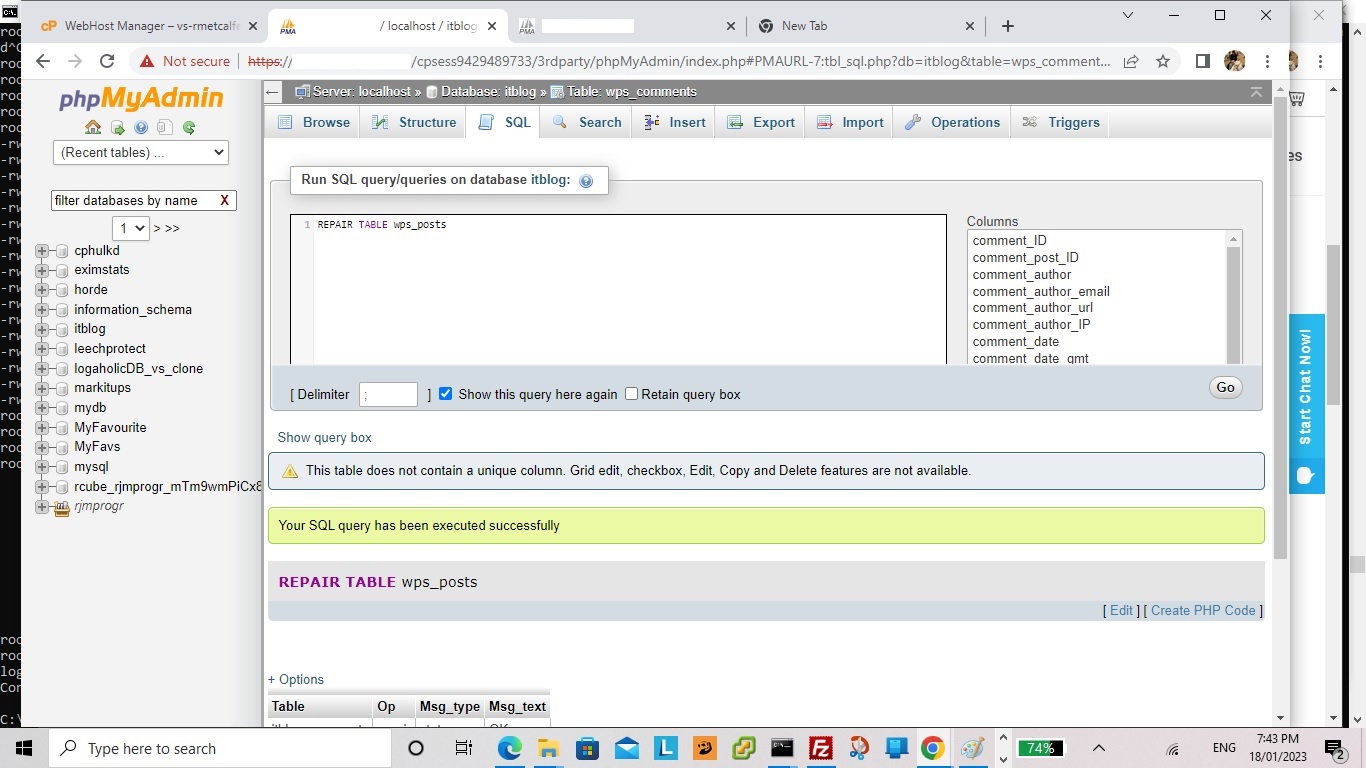Regarding Apache/PHP/MySql web hosting, when you see a chance for data migration, take it. The reason being, it is rare for any business run “close to the bone” to have enough resources to organize their own data migration initiative, though we’d all like to do so. Why?
Well, MySql degrades in performance over time with the web server disk becoming discontiguous, we’re pretty sure?! No, we have no proof. But, put it this way, before the wonderful domain migration our hosters, Crazy Domains, initiated on the 17/1/2023, we could not …
REPAIR TABLE wps_comments
… it would just time out on our RJM Programming WordPress MySql database comments table, but afterwards, this same SQL command was not an issue. We rest our Archimedes style empirical evidence based cases.
So, if your hoster offers a (domain/website/data) migration offer, do not stand in the way. They’ll be the ones who have access to the best resources needed to carry out such an operation, that in all likelihood, will improve the performance of your Apache/PHP/MySql domain websites. We can already see the performance improvement on many of the PHP/MySql “products” existing on the RJM Programming domain, after the 17/1/2023. Thanks, Crazy Domains!
Did you know?
Researching some PHP (web application) whose MySql failed before the data migration, it would say words to the effect …
MySql table wps_posts is marked as crashed. Please repair.
… but unlike other “repair jobs” this table was not shown as “in use” in the phpMyAdmin database table listing webpage, causing us confusion as to whether to take the error message above, seriously. But after the data migration we felt braver about trying the repair, and it worked, and it made the relevant PHP web application involved, to start working again, happily!
If this was interesting you may be interested in this too.



